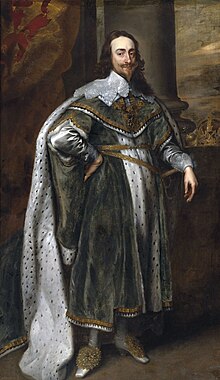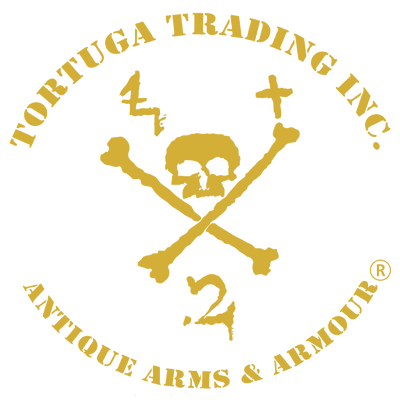King Charles I Silver Half Crown
King Charles I Silver Half Crown.
Denomination - Silver 1/2 CROWN
Reign - Charles I (1625-1649)
Mint - Tower Mint
Date - nv., circa. 1641-1643
Weight - 14.5 grams.
Grade - FINE
Obverse - King on Horse left
Reverse - Shield of Arms, mm triangle in circle, (1641-1643)
TTI-556721
Some History;
Great Britain c1625-1649 King Charles I Tower Mint Half 1/2 Crown Silver Coin.
This is a beautiful coin from England from a very controversial king. Charles I was executed in 1649 following a trial where he was found guilty of attempting to "uphold in himself an unlimited and tyrannical power to rule according to his will, and to overthrow the rights and liberties of the people"
Charles I of England
| Charles I | |
|---|---|

Portrait from the studio of Anthony van Dyck, 1636
|
|
|
King of England and Ireland
(more...)
|
|
| Reign | 27 March 1625 – 30 January 1649 |
| Coronation | 2 February 1626 |
| Predecessor | James I |
| Successor |
|
|
King of Scotland
(more...)
|
|
| Reign | 27 March 1625 – 30 January 1649 |
| Coronation | 18 June 1633 |
| Predecessor | James VI |
| Successor | Charles II |
|
|
|
| Born | 19 November 1600 Dunfermline Palace, Dunfermline, Scotland |
| Died | 30 January 1649 (aged 48) Whitehall, London, England |
| Burial | 9 February 1649
St George's Chapel, Windsor Castle, England
|
| Spouse | |
| Issue Detail |
|
| House | Stuart |
| Father | James VI of Scotland and I of England |
| Mother | Anne of Denmark |
| Religion | Anglican |
Charles I (19 November 1600 – 30 January 1649)[a] was King of England, Scotland, and Ireland from 27 March 1625 until his execution in 1649. He was born into the House of Stuart as the second son of King James VI of Scotland, but after his father inherited the English throne in 1603 (as James I), he moved to England, where he spent much of the rest of his life. He became heir apparent to the three kingdoms of England, Scotland, and Ireland in 1612 on the death of his elder brother Henry Frederick, Prince of Wales. An unsuccessful and unpopular attempt to marry him to the Spanish Habsburg princess Maria Anna culminated in an eight-month visit to Spain in 1623 that demonstrated the futility of the marriage negotiations. Two years later, he married the Bourbon princess Henrietta Maria of France.
After his succession in 1625, Charles quarreled with the Parliament of England, which sought to curb his royal prerogative. Charles believed in the divine right of kings, and was determined to govern according to his own conscience. Many of his subjects opposed his policies, in particular the levying of taxes without parliamentary consent, and perceived his actions as those of a tyrannical absolute monarch. His religious policies, coupled with his marriage to a Roman Catholic, generated antipathy and mistrust from Reformed religious groups such as the English Puritans and Scottish Covenanters, who thought his views were too Catholic. He supported high church Anglican ecclesiastics such as Richard Montagu and William Laud, and failed to aid continental Protestant forces successfully during the Thirty Years' War. His attempts to force the Church of Scotland to adopt high Anglican practices led to the Bishops' Wars, strengthened the position of the English and Scottish parliaments, and helped precipitate his own downfall.
From 1642, Charles fought the armies of the English and Scottish parliaments in the English Civil War. After his defeat in 1645, he surrendered to a Scottish force that eventually handed him over to the English Parliament (the "Long Parliament"). Charles refused to accept his captors' demands for a constitutional monarchy, and temporarily escaped captivity in November 1647. Re-imprisoned on the Isle of Wight, Charles forged an alliance with Scotland, but by the end of 1648 the Parliamentarian New Model Army had consolidated its control over England. Charles was tried, convicted, and executed for high treason in January 1649, after a show trial controlled by the Rump Parliament. The monarchy was abolished and the Commonwealth of England was established as a republic. The monarchy would be restored to Charles's son, Charles II, in 1660.








